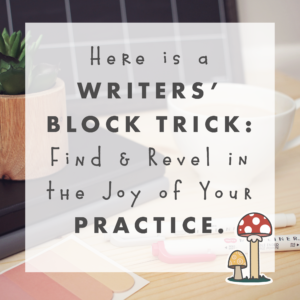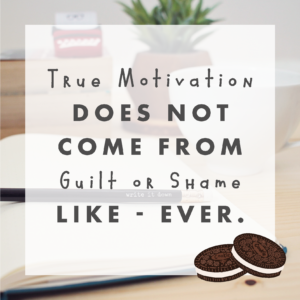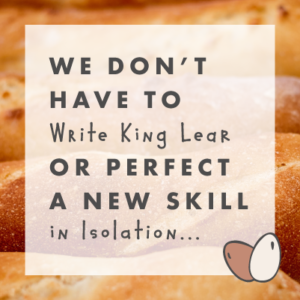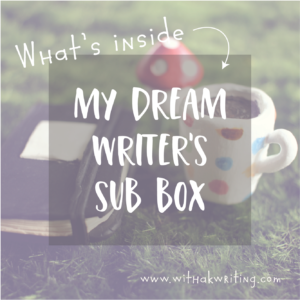5 Ways for Writers to Organize Ideas
How can you organize ideas in a way that will make everything clear and more fun?
I know I spend a lot of time harping on you guys to organize your ideas and plan your writing. Now, we’re talking about Revising, and I’m saying you have to re-organize your writing after the fact, if it feels wonky…
I know. I’m sorry. It’s like I’m telling you to re-invent the wheel just for the sake of checking off the “Revising” box on your list of writing to-dos. I’m not.
I don’t want you to change anything if it’s great already, but you should make sure that your ideas are organized in a way that will help your readers really get your point – the way you imagine it: perfect and brilliant and full of special wisdom.
[click_to_tweet tweet=”There is a right way to organize ideas when you’re writing. In fact, there are five!” quote=”There is a right way to organize ideas when you’re writing. In fact, there are five!”]
Here are five ways you can organize ideas in your writing and be certain that your readers will get it:
1. Chronological Order
- What it is: This is a very common way to organize ideas as a writer or storyteller that basically involves dishing out ideas or details in order of time, first to last.
- When to use it: It is often used in expository writing (narrative that informs or explains) – particularly when describing an event or series of events.
- Example: Think about when you were a kid and trying to explain to the principal why you shouldn’t be left in detention until the end of time. Yup! You described the events carefully and in order, because that’s how you make sure your listener/reader understands the context and details of a narrative.
- Transition words are important with every framework you use, to help your readers navigate the process smoothly. In the chronological framework, some commonly used transitional word and phrases are: first, then, next, last, finally, etc.
2. Logical Order
- What it is: exactly what it sounds like. This framework is used to avoid confusion in the reader.
- When to use it: You should organize ideas in this framework if your reader needs to understand one point before being capable of understanding the next.
- Example: Before talking to my students about Robert Frost’s famous poem about decisions – The Road Not Taken – I told them a story about the biggest decision I had made thus far in my life. They were able to take the logical leap to understanding the true nature of the poem after hearing about my process of decision making.
- Transition words and phrases: first you should understand, keep that in mind while I explain, remember when I said.
3. Climactic Order
- What it is: In this framework, you generally keep the most important or exciting point until the last of the piece.
- When to use it: Use this framework when you want to build excitement in a piece or really emphasize one point as the pinnacle of the piece. It is often used in persuasive essays (argument-winners, as my high school students would have said), rankings or lists of things or illustration of a major problem or usable solution.
- Example: When you are proving that your landlords need to fix the plumbing in the bathroom, you may start with the incessant dripping tap, to the waste of hot water in the leaking shower, and then landing on the punchline of the toilet being blocked up (because we all know that is the WORST). Leaving that final – and awful – point to resonate with your reader or listener will add more weight to the other points, and keep the most important one at the forefront of their mind.
- Transition Words: first of all, more importantly, just as importantly, finally.
4. Random Order
- What it is: Just as it seems, this un-framework allows you to order your ideas based on whim and whimsy more than any specific or logical progression.
- When to use it: Organize ideas in this way when your points all have equal value or importance and can sit independently of one another in understanding.
- Example: This one doesn’t happen often, but I’m using it today. All of these ways to organize ideas have the same value and need no chronological or logical order to make them clear, so TA DA! Random!
- Transition Words: Use association of ideas between points to transition from one to the next, rather than stock transition terms.
5. Spatial Order
- What it is: Describing a scene as things are arranged in a physical space – either by moving from one detail to the next, or as viewed from one stationary vantage point.
- When to use it: This one is so cool! You can use it whenever you want your readers to visualize a space, or if you want to evoke a scene using the senses.
- Example: Use this arrangement to organize ideas when you are describing your workspace, a product use or place description. It’s also a great way to slow down a story when it’s getting extremely intense and you want to add a little pacing for suspense: take a page to do a point-of-view description of the setting in the moment.
- Transition words: just to the left/right, behind, between, across from, rising out of, to the North/South etc., a little further, a few cm/inches/metres/feet (basically all prepositions).
Take a look at the last thing you wrote and try to figure out which framework you used to organize ideas in it.
Chances are that you did use one, even if you didn’t mean to. You could likely tighten it up though, and use it more effectively if you do it on purpose.
Thanks for reading today, ladies (and gents)!
Comment below and share which of these tips to organize ideas in your writing you plan on using – or which one you use a lot already.
Share, pin, tweet or like this post to save the tips for later – and join the #30DaysWithaK free-writing Challenge today to find your Voice and grow your writing practice in 30 days.
xo
Kris
You mad? Excited? Have a perspective to share? Please do!
22 Comments
Leave a Comment
Want to read more? Check out these recent articles.
The Joy of Writing: Find it in these three places to use on a rainy day.
Scene: you’re at your desk, hands dancing over the keys. Click clack clickity clackity click clack – swish. Now, layer that satisfying typewriter sound with a movie soundtrack in a major key – both invigorating and also somehow relaxing. The victory song – the joy of writing. There’s steam dancing from a coffee cup that…
Writing Resistance: The War of Art, or an Emotional Tiger Hunt?
Four rules to help you avoid Writing Resistance (and tiger bites) even when you’re stressed.
Intrinsic Writing Motivation isn’t built on guilt or shame.
Writing motivation comes in two forms. One works better than the other, but they’re both important – and neither should hurt.
Why you shouldn’t write King Lear right now, and what to do instead.
Oh there’s that meme again. You know the one about Shakespeare writing King Lear during the plague, or whatever. Or the other one saying that you never lacked “time” but rather you lack “discipline” unless you create or learn or complete some amazing life-goal right now. Maybe it’s a stream of pictures of *perfectly baked*…
“Just Start,” is the worst advice I’ve ever heard…or given.
I think those two words have hurt me more than my three worst ex-boyfriends…combined! Not because it’s bad advice to tell a person to just start the things they want to create. But because productivity for productivity’s sake – sucks. “Just Start!” is great advice if the problem you’re having is that you have a…
If I had a Writers’ Sub Box for #30DaysWithaK today, what would I put in it?
One of the key elements of a rich Writing Practice is the act of purposefully adding a sense joy & luxury to it. That doesn’t mean that you have to scream-laugh while you draft a blog post – or purchase a solid gold desktop to hide behind. But it does mean that we can find…






[…] and support your topic, organize those ideas and eliminate tangents. Ideas could be arranged chronologically, logically, in order of or reverse order of importance, or randomly. Now is the time to determine the overall shape of […]
[…] and support your topic, organize those ideas and eliminate tangents. Ideas could be arranged chronologically, logically, in order of or reverse order of importance, or randomly. Now is the time to determine the overall shape of […]
Thank you for the knowledge mam, now I can make a presentation about organizing ideas with your blog as my references. My English is not really good but I hope you understand 🙂
I like the Spatial order, it gives visualization to the reader. I can relate it easily. I look to read spatial orders a lot. I also used this in my writing peice.
Thanks for your beautiful and understanding presentation mam. I read it and then I would like to say the the last 5th one method I like tha most. So I would like to say thank you again.
Very informative, these five ways really help me because I have an idea but I don’t know how to express it. Now I’m able to put my ideas in the correct place.
huh, I will work on these.
I like chronological order and logical order. If I’m talking about chronological order so details in order of time, first to last.and if I’m talking about 2nd one it’s also help to reader better understanding.
Cool blog post! really is worth my time! Kuddos sir! I also want to add something, Its about using mind maps to keep your thoughts organized. I found mind mapping ideas really helpful especially in avoiding stress due to pressure. There are free ways to make a mind map if you are wondering, Gitmind, for example. Its online, and you can use many templates for different situation. Hope you find it useful. 😀
Thanks, Matt!
I’m not a sir, but I’ll take your kudos, regardless.
I love using mind maps too. It’s a great tactic to help you come up with, flesh out, and organize ideas in the prewriting step. Thanks!
Kris
Thank you, Kris! Very helpful and gives me some good ideas with upcoming pieces.
I’m glad you feel helped 🙂 Can’t wait to see what you come up with, Amy!
xo
K
Thank you so much for the practical tips. Now I can work on making a test question about it.
You are very welcome, Roger!
Hope your students enjoy learning about writing 🙂
xo
Kris
Thank you so much for the practical tips. Now I can work on making a test questions about it.
Good information and a great help – I probably write as if I am talking to someone and its not always the best method.
Fabulous tips, Kris! I think I bounce around in styles quite a bit. If I’m writing a photo post, it’s random in writing, but a crafting tutorial is definitely chronological!
A crafter I follow recently discussed the “salt method” in conversation, which would work just as we’ll in writing… It’s similar to climatic… You give one bit of enticing info, but no resolution, get their attention (salt, no water). Give another another bit if info – more salt, still no water. Keep adding salt and then the big finish with water 🙂
Thanks again for the great tips! Love them as you help me wrap my thoughts and ideas up with pretty bows (and cute Washi tape)!!
That’s a great metaphor to describe using climactic writing, Connie! I may use that with writing students.
xo
K
PS – WASHIIIIIII!
Thanks for the clarity in your post. I use chronological mostly. I sometimes use spatial, but hadn’t really thought about it as a way or organizing, so thanks for that tip.
Excellent, Valerie!
Even being aware of the fact that you are using one of these frameworks makes your use of them more effective.
xo
K
Chronological order is definitely my go to. 🙂
Cool! It’s a great way to do a narrative. Try switching things up with a spatial or logical order.
xo
K